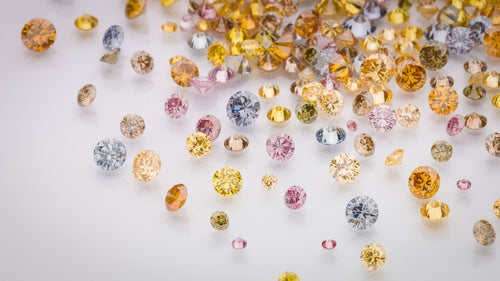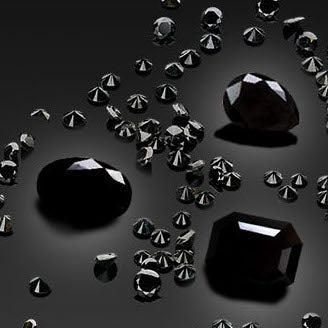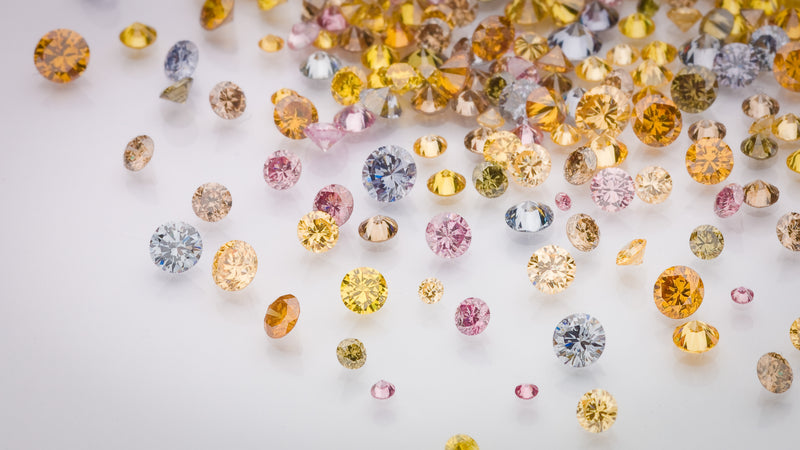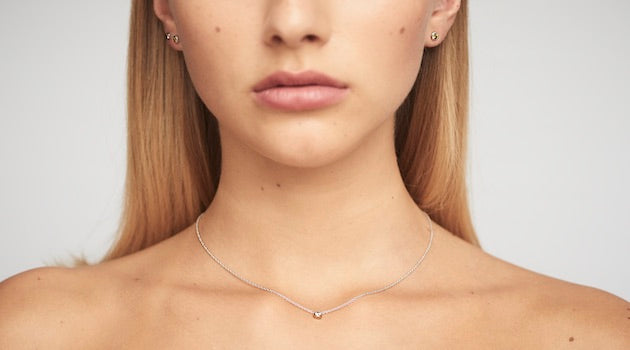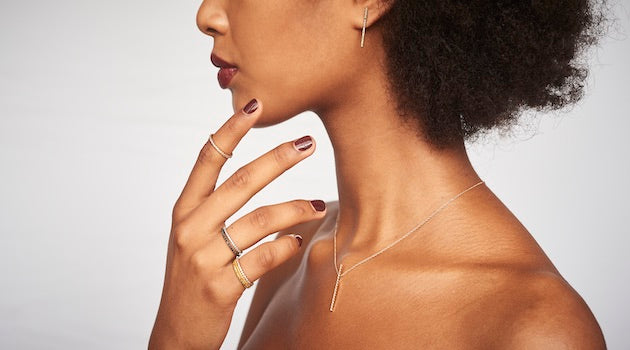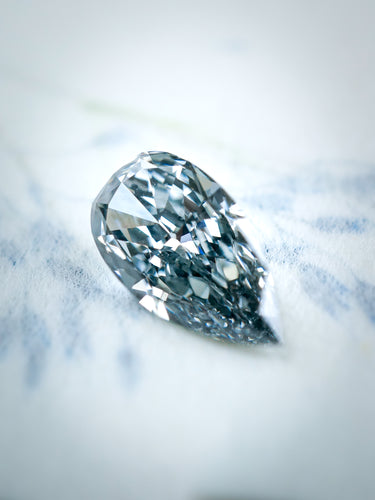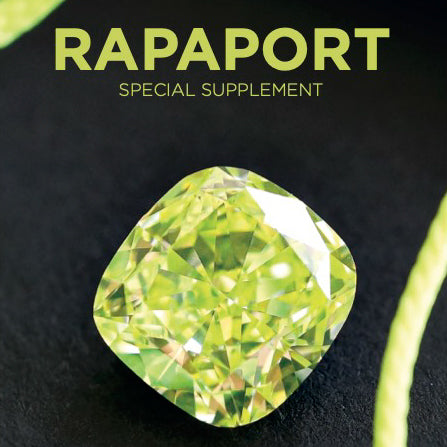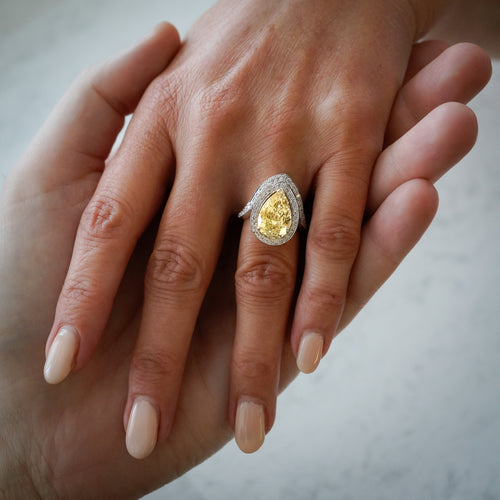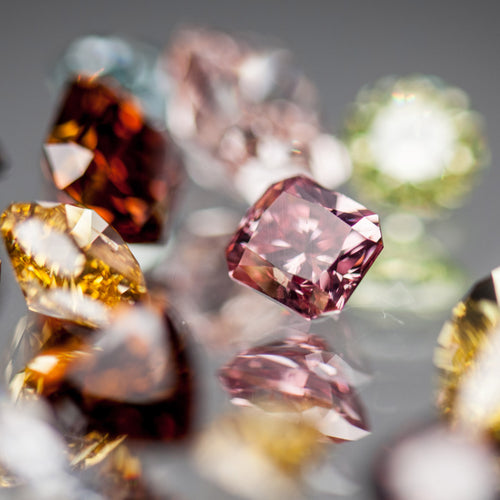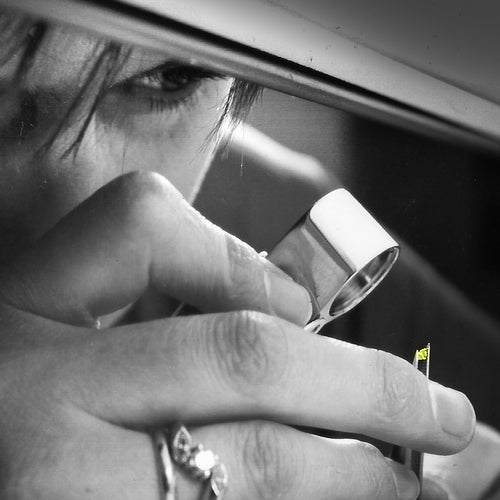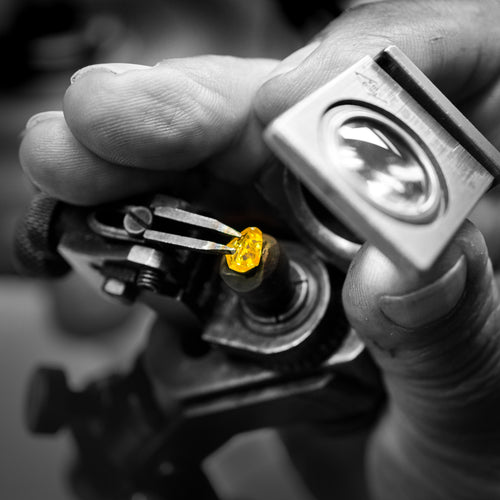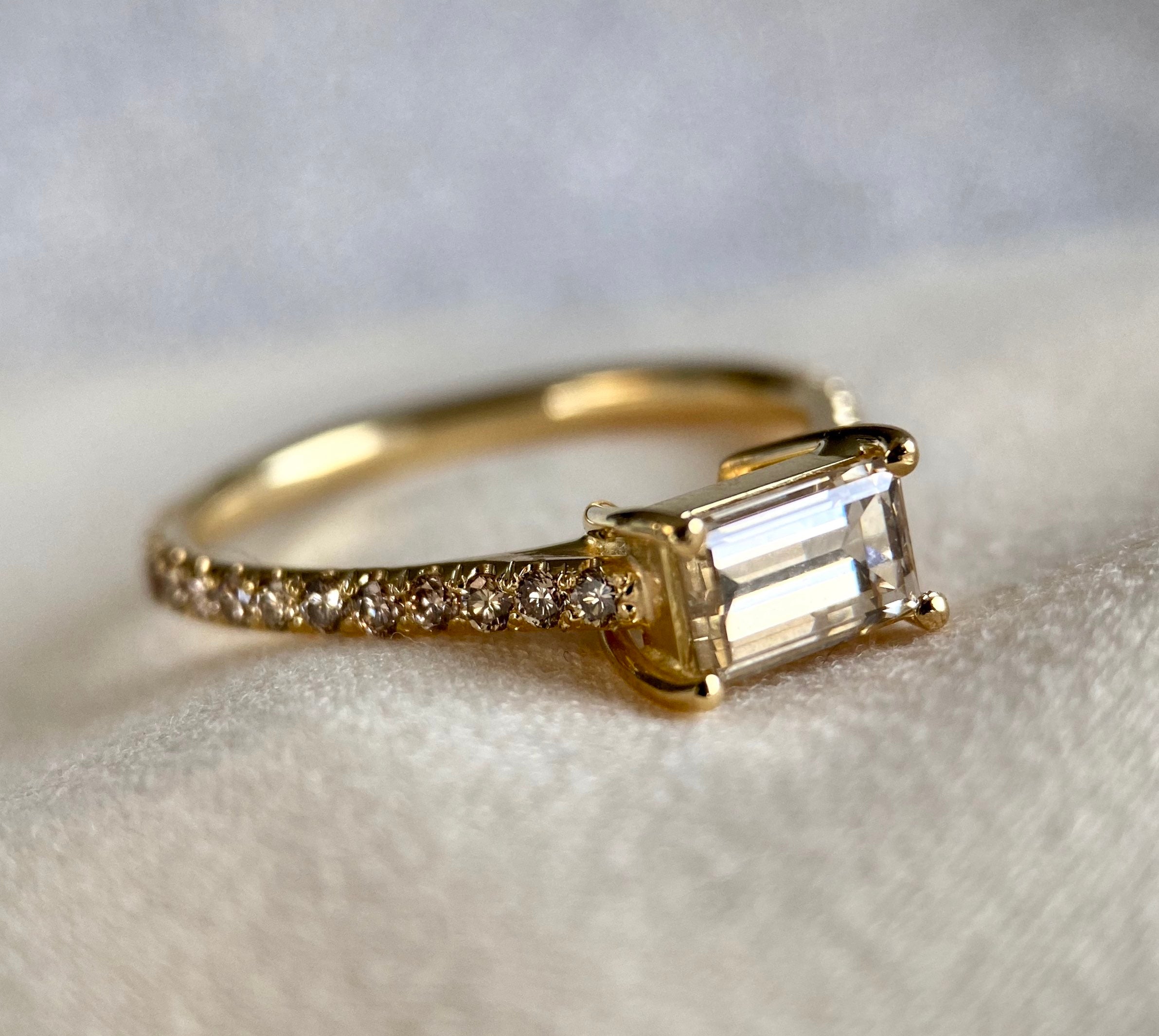




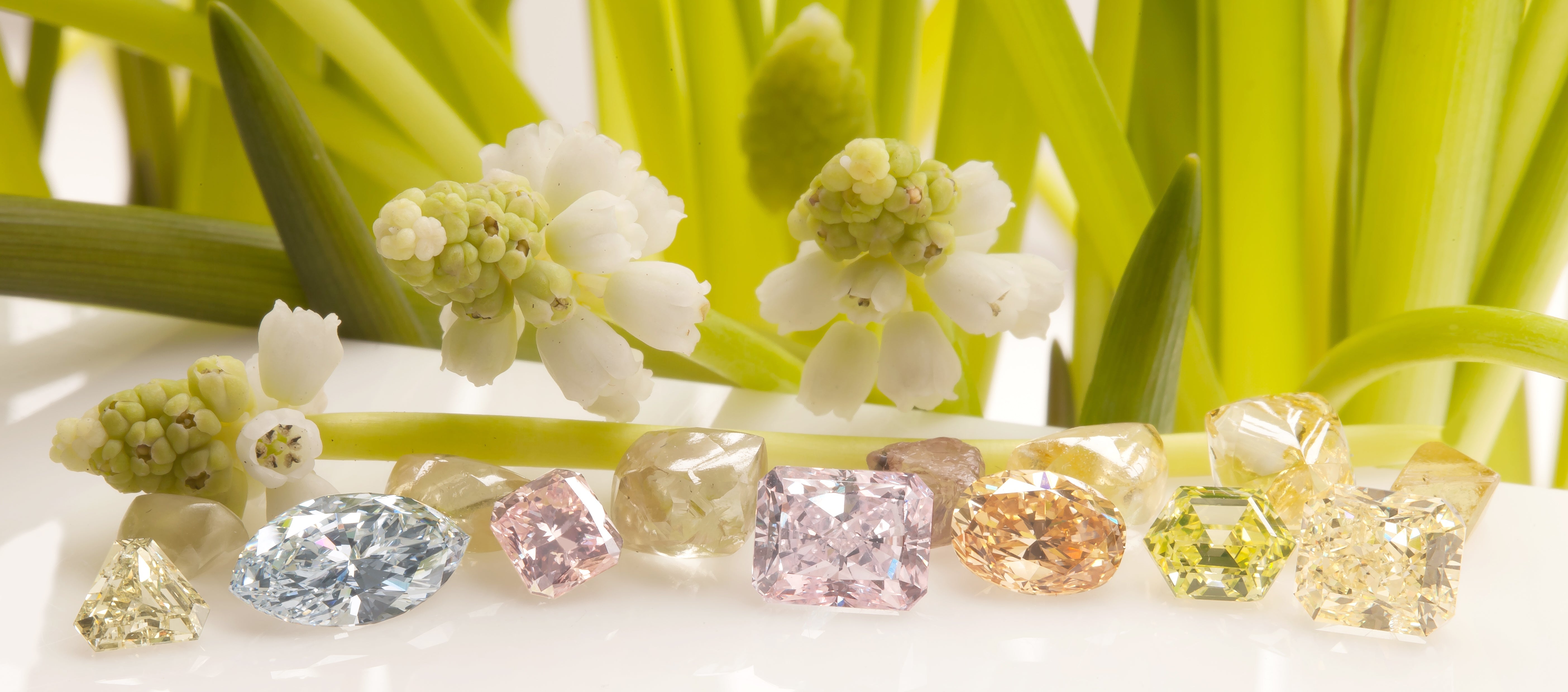
White or Colorless
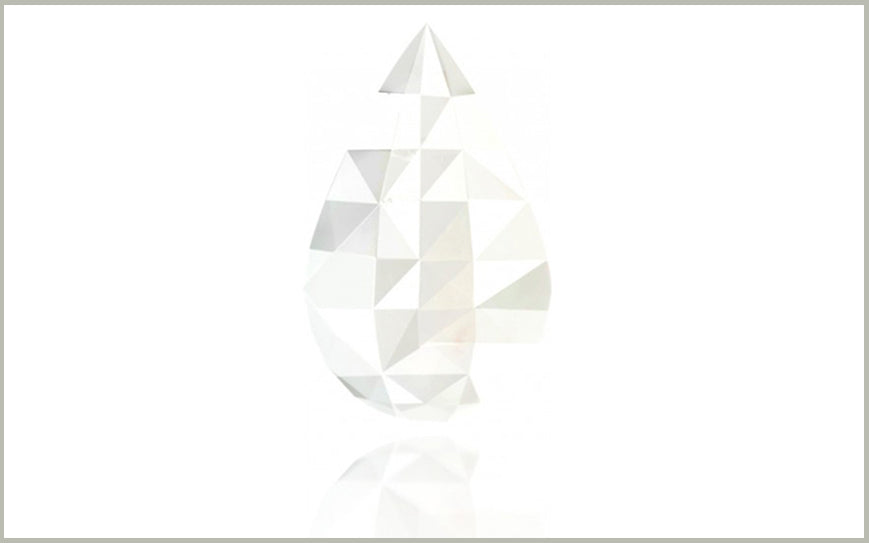
When speaking about natural fancy color diamonds, pink, blue, and yellow are often the first colors mentioned. But have you ever had the chance to admire a natural fancy white diamond, not the colorless kind referred to on the GIA’s D-Z color scale, but one that is truly white? Although white does not appear on the color spectrum it is in fact the sum of all colors and perhaps the reason why we just adore this color!
Fancy white diamonds are simply magical. They come in a variety of white hues, with brownish, pinkish, bluish, yellowish or grayish nuances. The beautiful snow-like color found in these types of diamonds is due to minute micro-inclusions that act as a diffraction grating, splitting the light and creating a play-of-colors effect.
Some fancy white diamonds will appear opaque while others are translucid. There are even opalescent examples which are frequently compared to white opals. These have a milky or pearly luster known as "opalescence” and are irresistible diamonds known for their colorful dispersion of light. With regards to the “play-of-color “ effect, it is much more subtle in fancy white diamonds, usually resulting in delicate pink, yellow or blue shines.
Most of the fancy white diamonds we have seen show a fluorescent and “milky” appearance which is considered a valuable aspect. This is not the case with colorless or clear diamonds, where it’s sometimes judged as a sign of lesser quality or poor color. Having said that, one should be careful when selecting fancy white diamonds since some can appear flat and lustreless, contrary to the beautiful ones that disperse and reflect light from the center of the stone.
There are very few fancy white diamonds on the market and most are sourced from India, the Democratic Republic of Congo, Zimbabwe or Brazil. Their scarcity makes them quite pricey, especially those showing no secondary colors, and they are highly desirable to collectors.
Fancy white diamonds can stand beautifully on their own as the centerpiece of any design. They can also be used to add contrast or to compliment the colors of other diamonds in creative settings, which make for inspired design possibilities.
Did we pique your curiosity about white diamonds?
Discover some stunning examples on our website or contact us with any questions.
